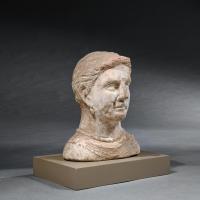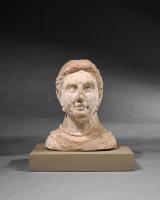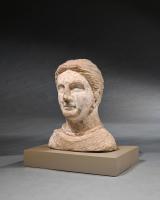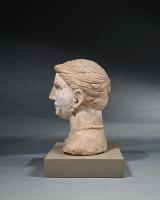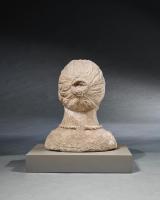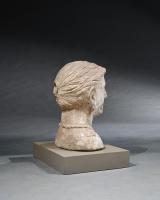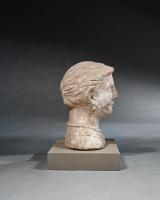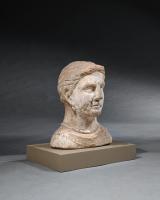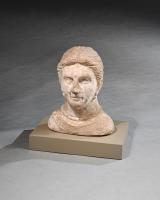
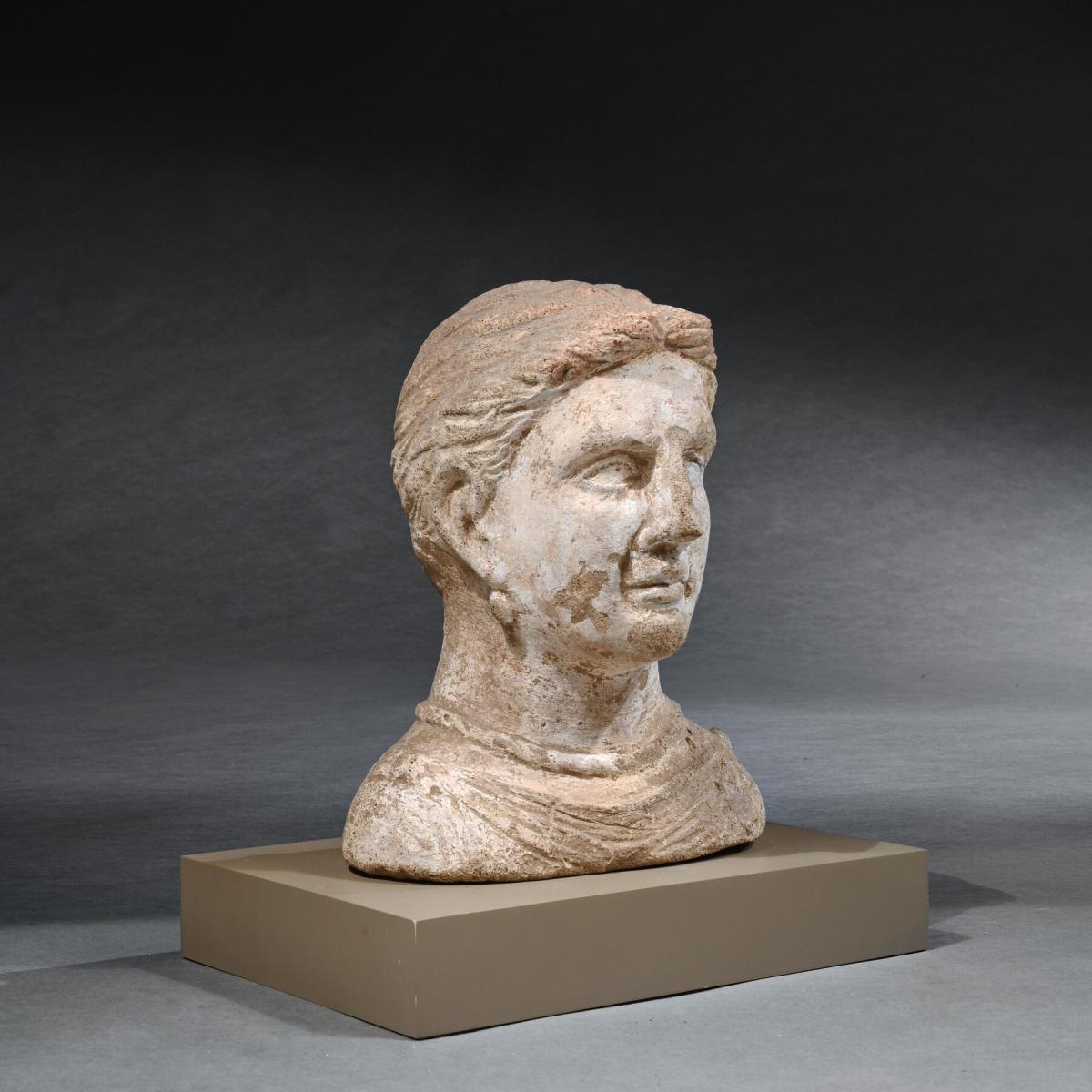
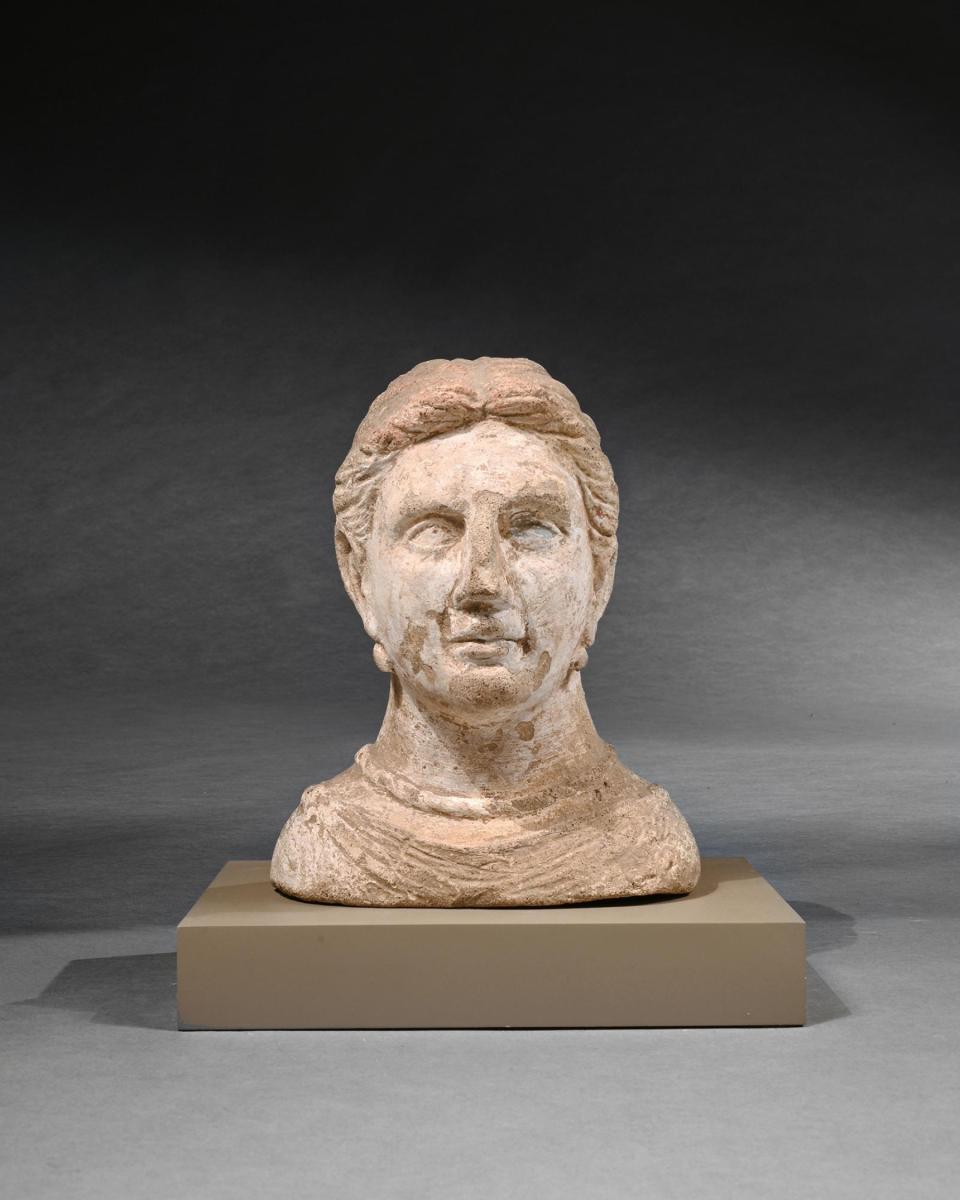
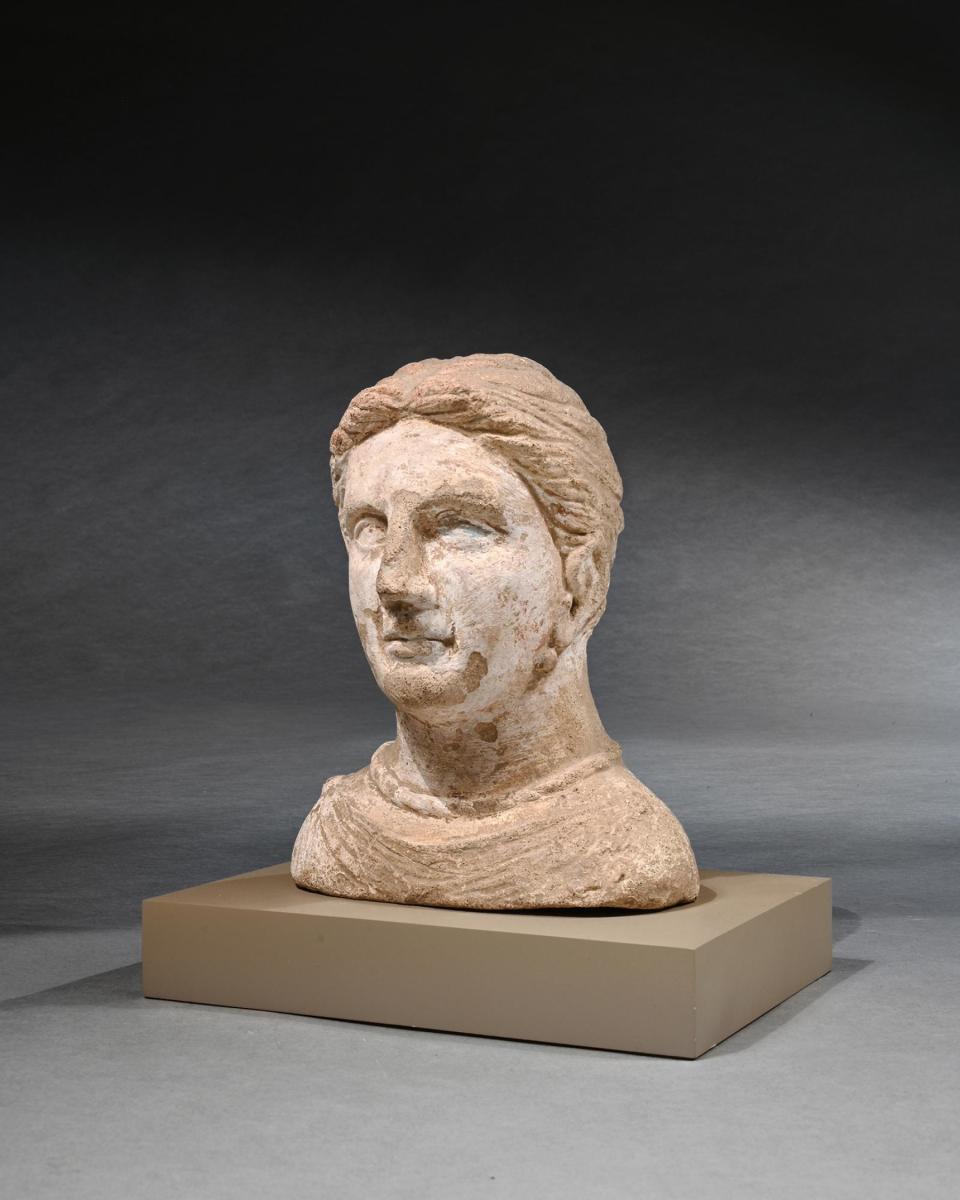
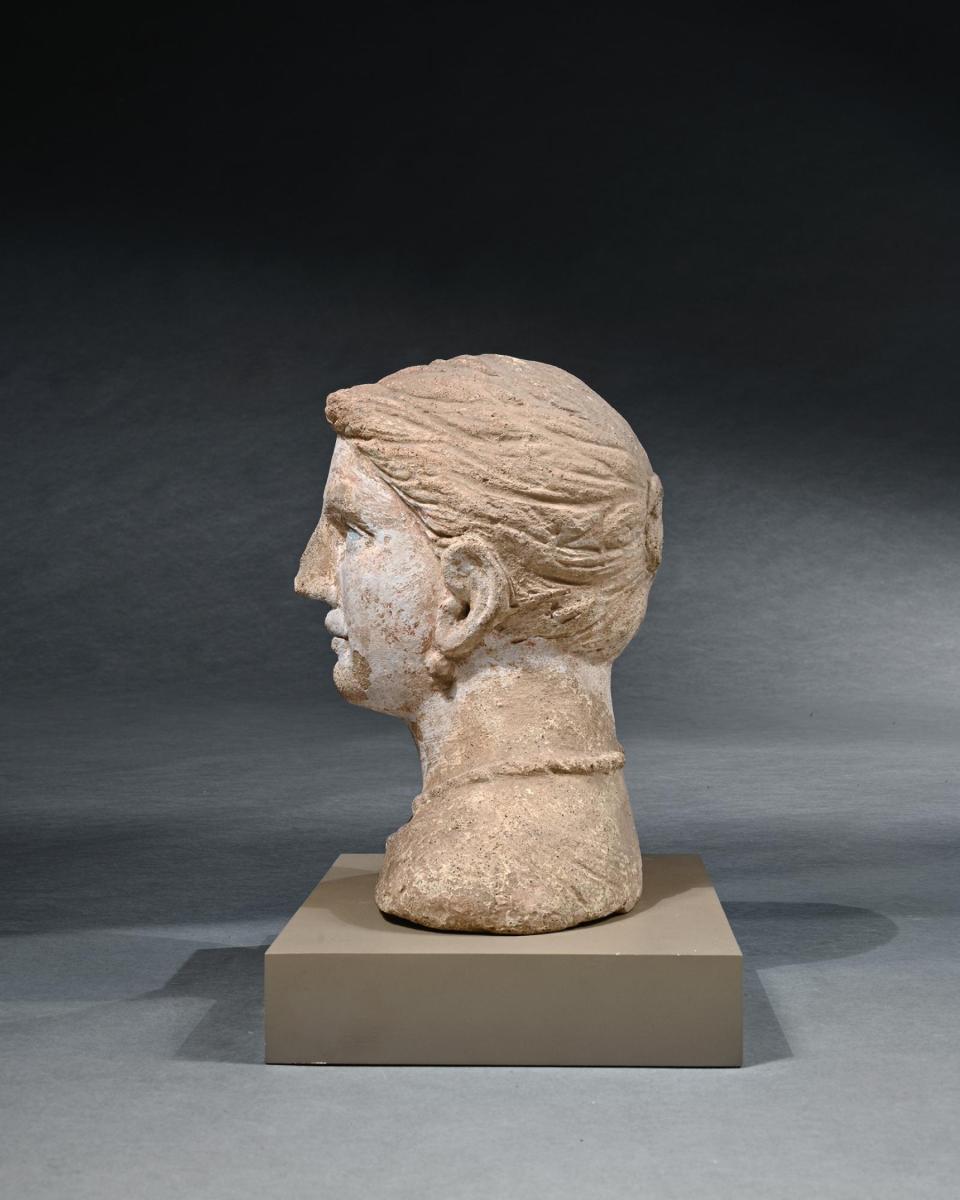
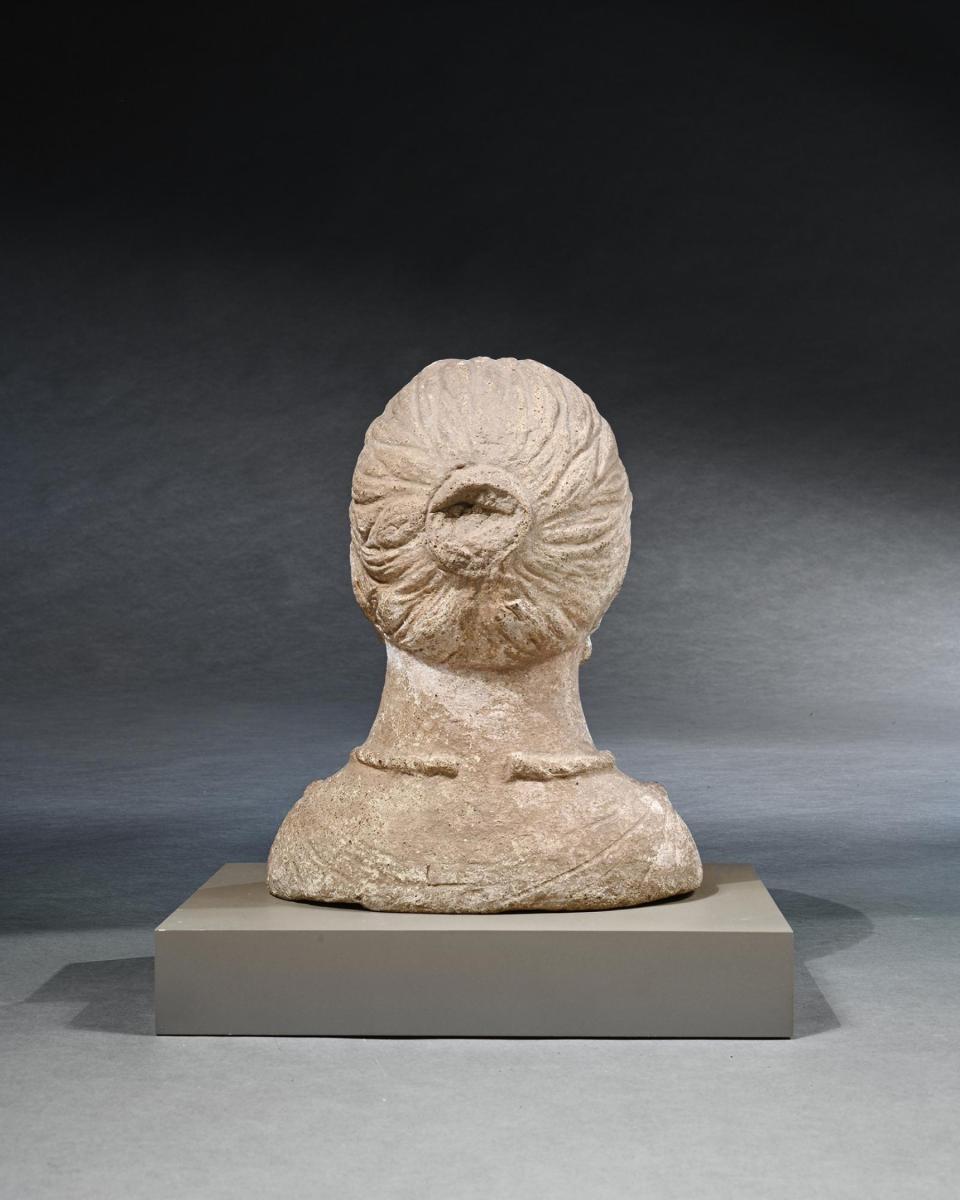
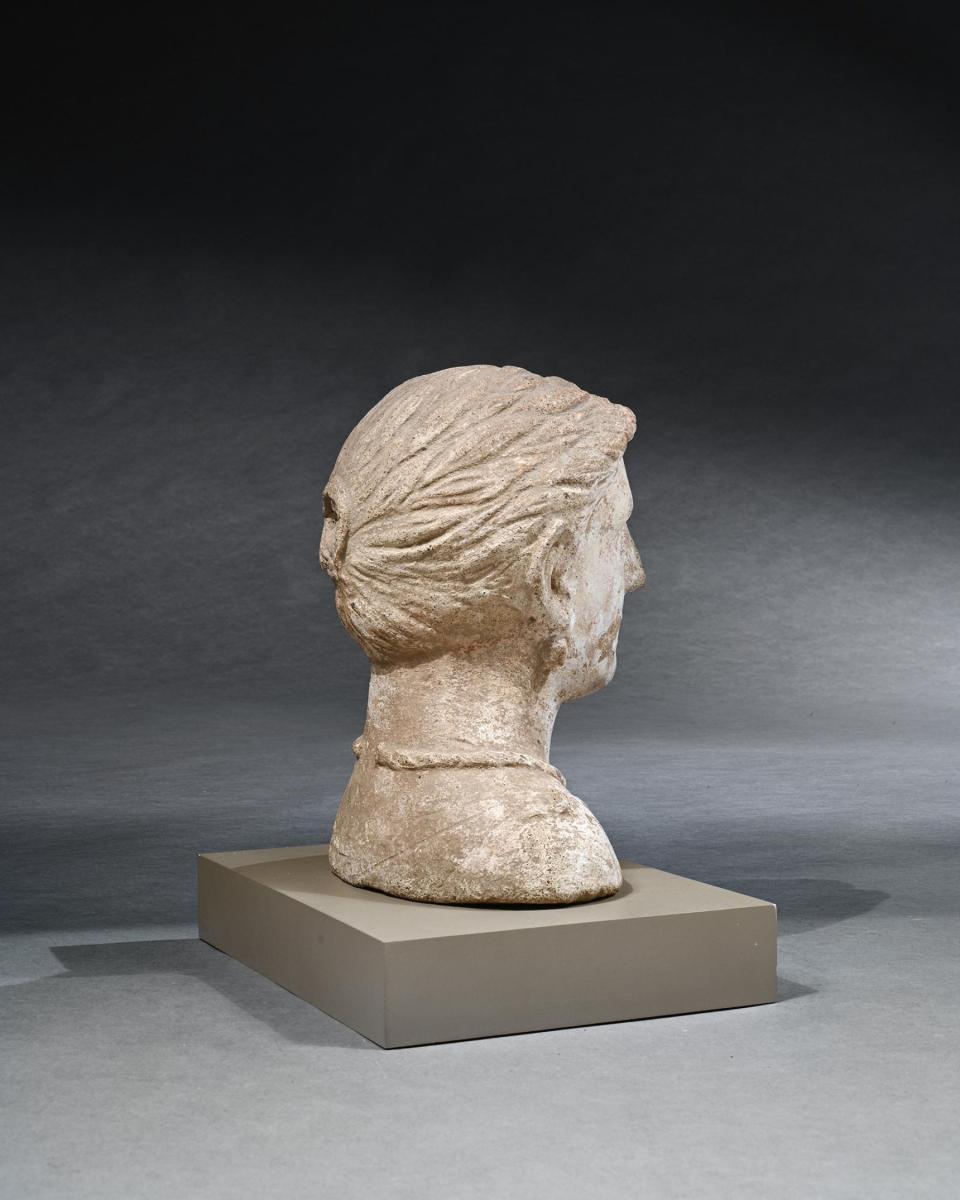
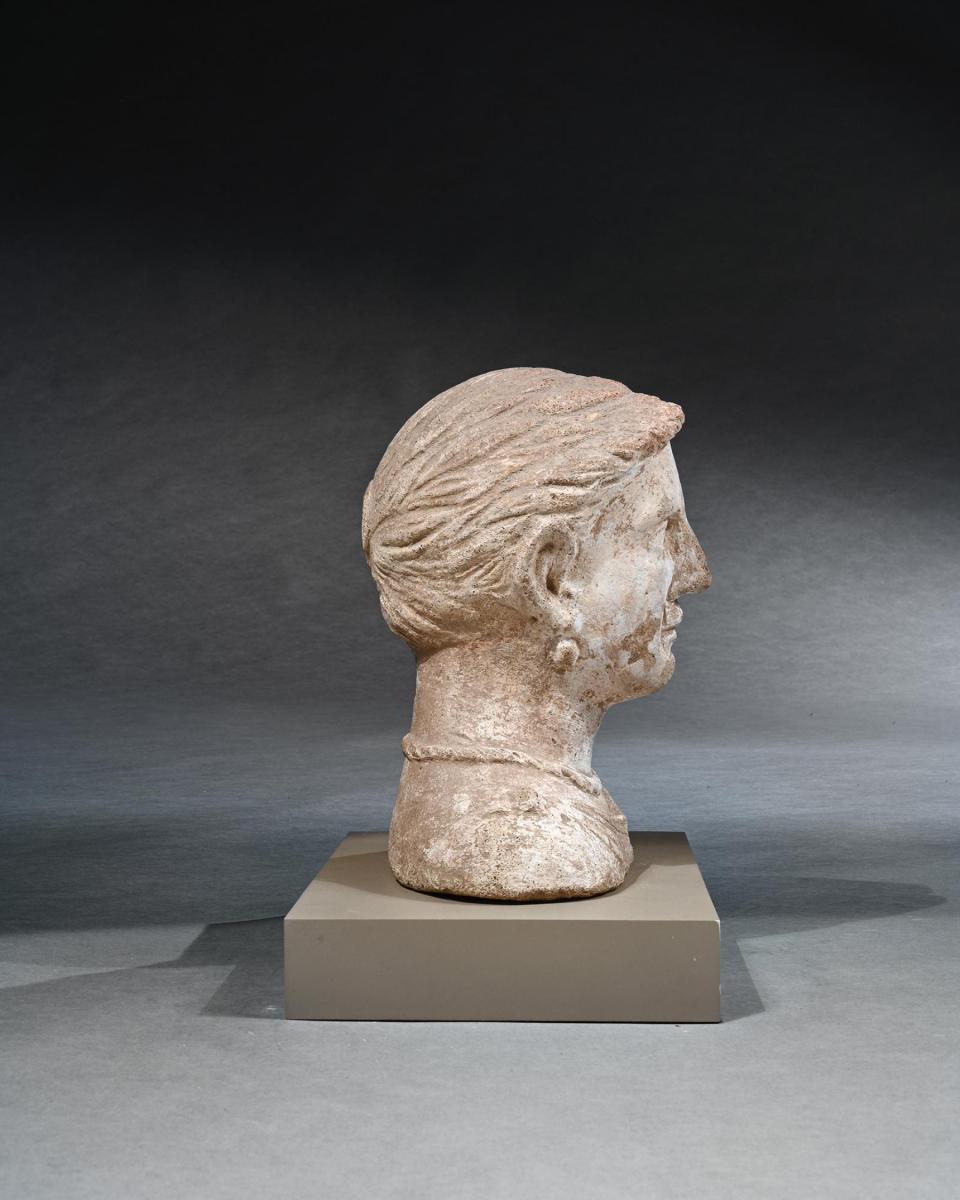
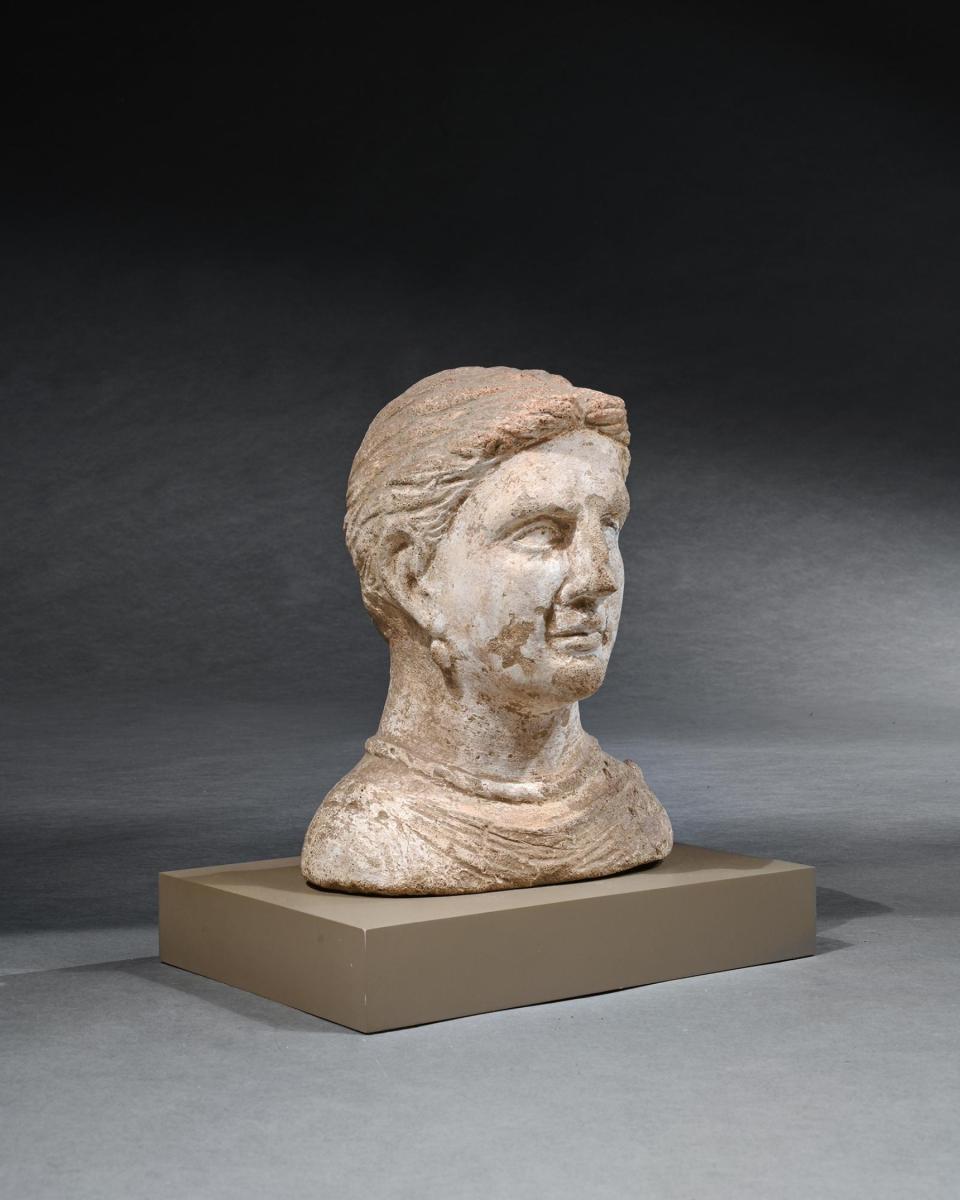
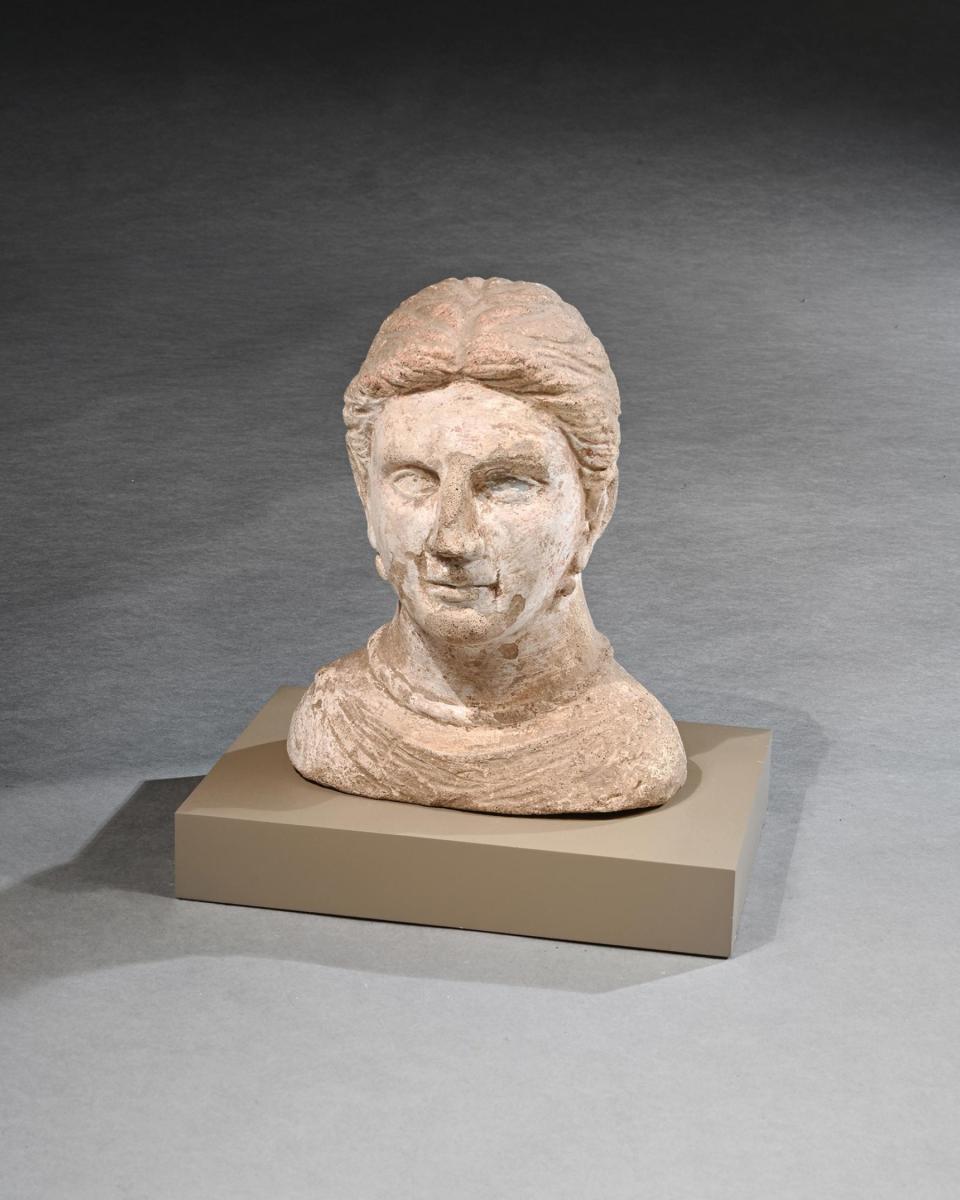
This object is eligible for a Certificate of BADA Provenance
The BADA Standard
- Since 1918, BADA has been the leading association for the antiques and fine art trade
- Members are elected for their knowledge, integrity and quality of stock
- Our clients are protected by BADA’s code of conduct
- Our dealers’ membership is reviewed and renewed annually
- Bada.org is a non-profit site: clients deal directly with members and they pay no hidden fees
A fine Ancient Etruscan Votive Female Bust with wonderful perseveration of traces of the original pigment and important provenance.
Italy - Circa 4th - 3rd Century BC
Provenance
Donati Arte Classica, Lugano
Sold in 1974 to a private Swiss collection
Sold Christie’s, New York, 8 June 2001, lot 57
Private USA Collection
This very fine terracotta bust or statuette, crafted in the 4th / 3rd Century BC in the Etruria region of Italy, was a votive piece influenced by classical Greek tradition but adapted in the Etruscan period to reflect the new pantheon of deities worshipped in the region.
The hollow mould-made head with her centre-parted hair pulled back into a bun at the nape of her neck, the long oval face with lidded almond-shaped eyes, a prominent nose, small lips and rounded chin, wearing pendant ovoid earrings and a thick necklace, drapery falling along her shoulders, traces of pigment preserved, including blue for the left eye, mounted on a lacquered display stand.
Votive pieces such as this one served the purpose of representing the person depicted engaging with the gods. These offerings were taken to the temples of the respective deities and left there with a prayer, with the hope that the request would be fulfilled.
According to Jean MacIntosh Turfa in "The Religion of the Etruscans" (2006), our interpretation of votive gifts is often influenced by modern beliefs, but archaeological evidence suggests that the gods of the Mediterranean desired material offerings.
Votives were both gifts to the gods and symbolic representations of the giver's wishes. Moreover, the gods themselves were represented in these temples and shrines through sculptures, symbolising divine communion in human terms through artefacts.
Most surviving votive offerings today are representations of various parts of the human body, intended to be placed in shrines to gods and goddesses associated with healing. These representations symbolised the hope for healing of the afflicted body part. For instance, a sculpted foot might symbolise the wish for healing of a broken foot. Furthermore, some votive offerings took the form of anatomical representations, such as the one found in the Getty Museum in California.
https://www.getty.edu/art/collection/object/103SYM
Portrait pieces such as our own are more difficult to interpret. It may be that they were left in gratitude after a medical healing had taken place or they may have entirely different connotations. Perhaps they were used to make requests for good fortune, love etc. and were not intended to have any associations with physical ailments. They are certainly much rarer and, of course, are more decorative in the conventional sense as a result.
Two good comparatives to our piece are found in the British Museum, both of the same period and of a similar aesthetic value.
https://www.britishmuseum.org/collection/object/G_1839-0214-9
https://www.britishmuseum.org/collection/object/G_1839-0214-31
Width: 8 3/4 inches - 22cm.
Height: 11 inches - 28cm.
Depth: 4 inches - 10cm.
Dimensions
Width: 8 3/4 inches - 22cm Height: 11 inches - 28cm Depth: 4 inches - 10cmThe BADA Standard
- Since 1918, BADA has been the leading association for the antiques and fine art trade
- Members are elected for their knowledge, integrity and quality of stock
- Our clients are protected by BADA’s code of conduct
- Our dealers’ membership is reviewed and renewed annually
- Bada.org is a non-profit site: clients deal directly with members and they pay no hidden fees


